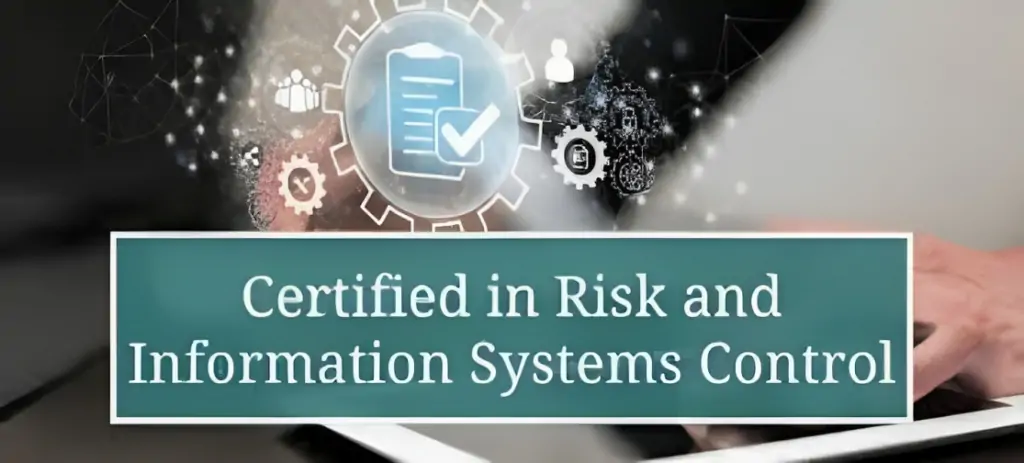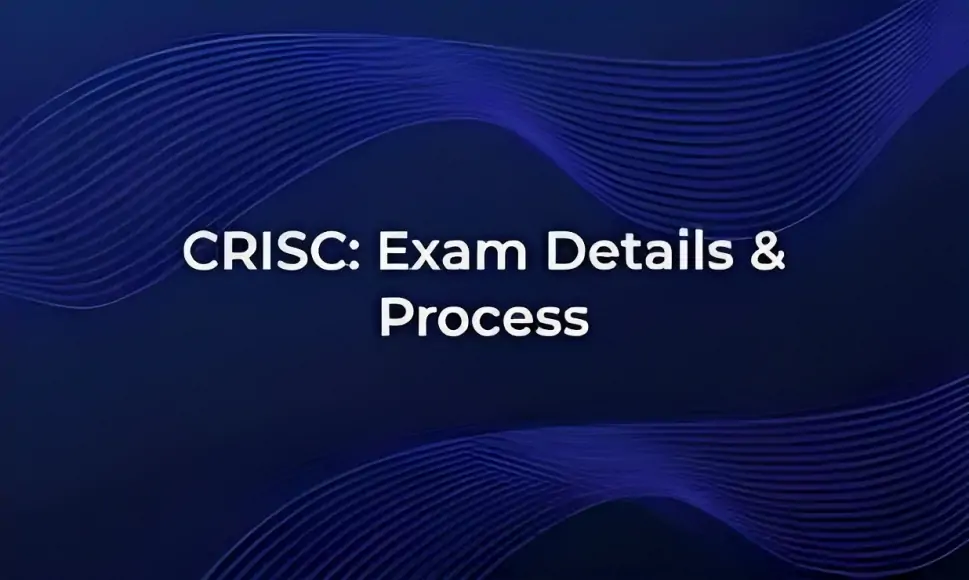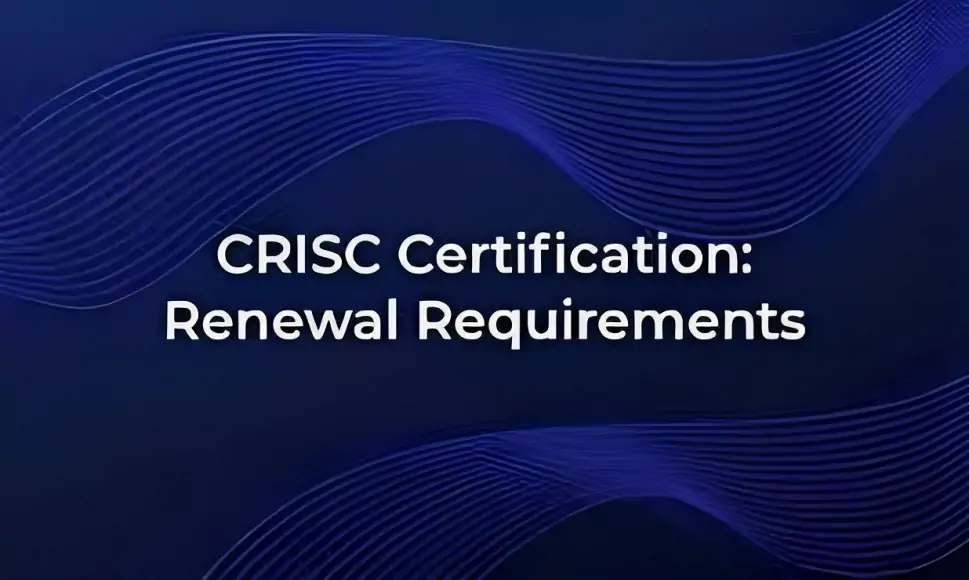The Certified in Risk and Information Systems Control, CRISC certification stands as a beacon of excellence in this evolving landscape, and your journey toward mastering it begins here.

Introduction:
In a digital age where information is both a prized asset and a potential vulnerability, the management of information systems and technology-related risks has become paramount. The Certified in Risk and Information Systems Control, CRISC certification stands as a beacon of excellence in this evolving landscape, and your journey toward mastering it begins here.
In this comprehensive guide, we will embark on a voyage through the world of CRISC Certification Training, illuminating the path to expertise in risk management and the governance of information systems. We will explore the intricacies of CRISC, shedding light on the knowledge, skills, and ethical standards required to excel in this field.
Join us as we navigate the domains of CRISC, understand the importance of aligning IT with business objectives, and delve into the solutions that ensure effective risk management. Whether you’re an aspiring professional or a seasoned expert looking to sharpen your skills, this blog is your gateway to the world of CRISC, offering insights and guidance to shape your success.
Importance of CRISC Certification:
The importance of CRISC certification lies in its ability to address the growing need for professionals who can effectively manage and mitigate information systems risks. With the increasing reliance on technology and data, organizations face numerous cyber security threats and regulatory challenges. CRISC-certified professionals are equipped with the knowledge and skills to identify, assess, and mitigate these risks, helping organizations safeguard their information assets and achieve their business goals.
By earning the CRISC certification, individuals demonstrate their expertise in risk management and information systems control, making them valuable assets to organizations across various industries. Additionally, CRISC certification can open doors to career advancement and increased earning potential.
Eligibility Requirements:
To become CRISC certified, candidates must meet specific eligibility requirements set by ISACA. These requirements are designed to ensure that candidates have the necessary experience and qualifications to excel in the field of information systems risk and control.
Professional Experience: Candidates must have a minimum of three years of cumulative work experience in at least three of the four CRISC domains within the ten-year period preceding the application date. The domains are Risk Identification, Risk Assessment, Risk Response and Mitigation, and Risk and Control Monitoring and Reporting.
Educational Qualifications: ISACA offers two options for meeting the educational requirements:
a. A minimum of three years of work experience in at least three CRISC domains, as described above, and a post-secondary degree (bachelor’s degree or higher).
b. A minimum of three years of work experience in at least three CRISC domains, as described above, and a full-time equivalent work experience of at least one year in at least three of the CRISC domains.
It’s important to note that candidates who pass the CRISC exam but do not meet the work experience requirements can become “CRISC-eligible.” They have up to five years to obtain the necessary work experience and become fully certified.
CRISC Exam Format:
- CRISC exam consists of 150 multiple-choice questions.
- The exam duration is four hours.
- The questions are divided among the four CRISC domains, with varying weights assigned to each domain.
CRISC Certification Domains:
The CRISC exam is structured around four domains, each representing a distinct aspect of information systems risk and control. Candidates are tested on their knowledge and ability to apply these domains in real-world scenarios. Here’s an overview of each domain:
The Risk Identification
- This domain focuses on the ability to identify information systems risks within an organization.
- Topics include risk assessment methodologies, risk scenarios, risk appetite and tolerance, and the role of key risk indicators (KRIs).
The Risk Assessment
- This domain covers the process of assessing and evaluating information systems risks.
- Topics include risk analysis techniques, risk assessment frameworks, control assessment, and risk heat maps.
Risk Response and Mitigation
- This domain explores how to develop and implement risk response strategies.
- Topics include risk treatment plans, risk mitigation techniques, control implementation, and business process controls.
Risk and Control Monitoring and Reporting
- This domain focuses on monitoring and reporting on the effectiveness of risk management controls.
- Topics include key risk indicators (KRIs), control monitoring processes, control testing, and risk reporting.
Each domain has its own set of knowledge areas and tasks that candidates must be proficient in to pass the CRISC exam. It’s essential for candidates to thoroughly understand these domains and be able to apply their knowledge to real-world scenarios.
Preparation for CRISC Exam:
Preparing for the CRISC exam requires a combination of study materials, training, and practice. Here are some key considerations for exam preparation:
Study Materials:

Training and Courses:
- BlueMorpho Learning Solutions offers training courses and workshops specifically designed to prepare candidates for the CRISC exam.
- Candidates can attend in-person or virtual training sessions to gain a deeper understanding of the exam domains.
- Additionally, there are many third-party training providers that offer CRISC preparation courses.
Practice Tests:
- Practice tests and sample questions are essential for assessing your knowledge and readiness for the exam.
- ISACA provides official CRISC practice questions and a simulated exam.
- Third-party sources also offer practice exams that mimic the format and content of the real CRISC exam.
It’s important to create a study plan that aligns with your schedule and allows you to cover all the exam domains thoroughly. Many candidates find it helpful to study systematically over several months to ensure they are adequately prepared.
Benefits of CRISC Certification:
Earning the CRISC certification offers numerous benefits to professionals in the field of information systems risk and control. Here are some of the key advantages:
Career Advancement:
- CRISC certification can open doors to higher-level positions within organizations.
- It demonstrates your expertise in risk management, making you a valuable asset in leadership roles.
Increased Earning Potential:
- CRISC-certified professionals often command higher salaries compared to their non-certified peers.
- The certification can lead to salary increases and better job offers.
Expertise Recognition:
- CRISC certification is globally recognized and respected, demonstrating your competence in information systems risk and control.
- Employers and colleagues recognize the value of CRISC certification.
Industry Demand:
- As organizations increasingly prioritize risk management and information security, the demand for CRISC-certified professionals continues to grow.
- Job opportunities are available across various industries, including finance, healthcare, IT, and government.
CRISC Certification Renewal:
CRISC certification is valid for three years. To maintain your certification and continue benefiting from its advantages, you must engage in Continuing Professional Education (CPE) activities and pay renewal fees.

Continuing Professional Education (CPE):
- CRISC-certified professionals are required to earn a minimum of 120 CPE credits during the three-year certification cycle.
- CPE activities can include attending conferences, participating in webinars, taking additional training courses, and publishing articles or papers in relevant journals.
Renewal Fees:
- There is a renewal fee associated with maintaining your CRISC certification.
- ISACA members often receive discounted renewal fees.
It’s essential to keep track of your CPE activities and submit them to ISACA to ensure a smooth renewal process.
Career Opportunities with CRISC:
CRISC certification can lead to a wide range of career opportunities in various industries. Here are some of the job roles and industries where CRISC-certified professionals are in demand:

Job Roles:
- IT Risk Manager
- Information Security Manager
- Compliance Manager
- Business Continuity Manager
- IT Auditor
- Risk Consultant
- Chief Information Officer (CIO)
- Chief Information Security Officer (CISO)
Industries:
- Finance and Banking
- Healthcare
- Information Technology
- Government and Public Sector
- Consulting Firms
- Manufacturing
- Retail
- Energy and Utilities
The versatility of CRISC certification allows professionals to pursue careers in sectors that align with their interests and expertise.
Some additional unique topics related to CRISC:
“Cyber Security Risk Management in the Age of Remote Work”
- Investigate the evolving landscape of cyber security risks as organizations increasingly adopt remote work models. Explore strategies for effective risk management in this context.
“The Role of CRISC in Enhancing Business Continuity Planning”
- Analyze how CRISC-certified professionals contribute to business continuity planning, particularly in the context of information systems and technology risk.
“The Impact of Regulatory Compliance on Information Systems Risk Management”
- Explore the intersection of regulatory compliance requirements (such as GDPR, HIPAA, or SOX) and information systems risk management. Discuss how CRISC certification plays a pivotal role in ensuring compliance.
“Quantifying and Measuring Information Systems Risk: A CRISC Approach”
- Delve into methodologies and models for quantifying and measuring information systems risks. Discuss how CRISC-certified professionals employ these approaches to make informed risk management decisions.
“Third-Party Risk Management and CRISC Certification”
- Investigate the critical role CRISC-certified professionals play in managing risks associated with third-party vendors and suppliers. Explore best practices and case studies in this area.
“The Future of Cyber Threats: Predictive Risk Management with CRISC”
- Examine the emerging trends in cyber threats and how CRISC professionals can adopt predictive risk management strategies to proactively address these threats.
“Sustainability and Environmental Risks in Information Systems: A CRISC Perspective”
- Explore the intersection of sustainability, environmental risks, and information systems. Discuss the role of CRISC-certified experts in ensuring sustainable and resilient technology practices.
“Resilience in the Face of Cyber Security Incidents: A CRISC Case Study Analysis”
- Analyze real-world cyber security incident response cases and evaluate the role of CRISC professionals in enhancing organizational resilience.
“CRISC Certification’s Impact on IT Governance and Strategy”
Conclusion:
Certified in Risk and Information Systems Control, CRISC Certification is a prestigious certification offered by ISACA for professionals in the field of information systems risk and control. It is highly regarded worldwide and provides numerous benefits, including career advancement, increased earning potential, and recognition of expertise.
To become CRISC certified, candidates must meet eligibility requirements, pass the CRISC exam, and engage in ongoing professional development through CPE activities. The certification opens doors to various job roles and industries, making it a valuable investment in your career.
Whether you are an IT risk manager, information security professional, or aspiring to work in risk management, CRISC certification can help you stand out in the competitive field of information systems risk and control. It equips you with the knowledge and skills to navigate the complex landscape of technology-related risks and provide valuable insights to organizations seeking to protect their information assets and achieve their business objectives.


